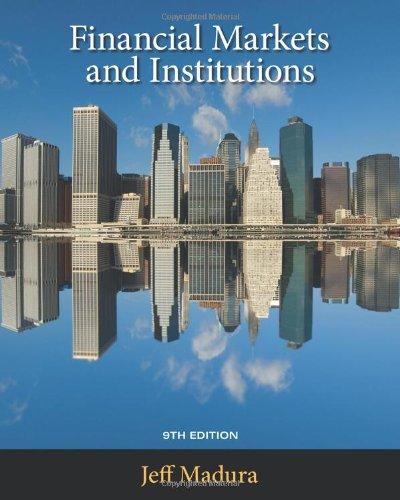Answered step by step
Verified Expert Solution
Question
1 Approved Answer
IV. The risk-free rate is 3.7 percent and the expected return on the market is 12.3 percent. Stock A has a beta of 1.1 and



 IV. The risk-free rate is 3.7 percent and the expected return on the market is 12.3 percent. Stock A has a beta of 1.1 and an expected return of 13.1 percent. Stock B has a beta of 0.8 and an expected return of 11.4 percent. Are these stocks correctly priced? Why or why not? (10 points) V. Western Electric has 1,200,000 shares of common stock outstanding at a price per share of $30 and a rate of return of 12.5 percent. The firm has 50,000 shares of 6 percent preferred stock outstanding at a price of $90 a share. The preferred stock has a par value of $100. The outstanding debt has a total face value of $6,000,000 and currently sells for 95 percent of face value. The yield to maturity on the debt is 6.30 percent. What is the firm's weighted average cost of capital if the tax rate is 21 percent? (12 points) III. An investor is forming a portfolio by investing $60,000 in stock A that has a beta of 1.50 , and $40,000 in stock B that has a beta of 0.6 . The return on the market is equal to 12 percent and Treasury Bills have a yield of 4 percent. What is the beta of the portfolio and what is the required rate of return on the investor's portfolio? (10 points) II. Two stocks are expected to produce the following returns given the various states of the economy. Please calculate the expected rate of return, variance and standard deviation for the two stocks. Which is a better investment? ( 20 points)
IV. The risk-free rate is 3.7 percent and the expected return on the market is 12.3 percent. Stock A has a beta of 1.1 and an expected return of 13.1 percent. Stock B has a beta of 0.8 and an expected return of 11.4 percent. Are these stocks correctly priced? Why or why not? (10 points) V. Western Electric has 1,200,000 shares of common stock outstanding at a price per share of $30 and a rate of return of 12.5 percent. The firm has 50,000 shares of 6 percent preferred stock outstanding at a price of $90 a share. The preferred stock has a par value of $100. The outstanding debt has a total face value of $6,000,000 and currently sells for 95 percent of face value. The yield to maturity on the debt is 6.30 percent. What is the firm's weighted average cost of capital if the tax rate is 21 percent? (12 points) III. An investor is forming a portfolio by investing $60,000 in stock A that has a beta of 1.50 , and $40,000 in stock B that has a beta of 0.6 . The return on the market is equal to 12 percent and Treasury Bills have a yield of 4 percent. What is the beta of the portfolio and what is the required rate of return on the investor's portfolio? (10 points) II. Two stocks are expected to produce the following returns given the various states of the economy. Please calculate the expected rate of return, variance and standard deviation for the two stocks. Which is a better investment? ( 20 points) Step by Step Solution
There are 3 Steps involved in it
Step: 1

Get Instant Access to Expert-Tailored Solutions
See step-by-step solutions with expert insights and AI powered tools for academic success
Step: 2

Step: 3

Ace Your Homework with AI
Get the answers you need in no time with our AI-driven, step-by-step assistance
Get Started


